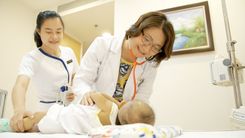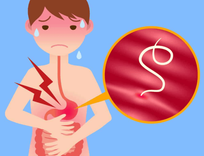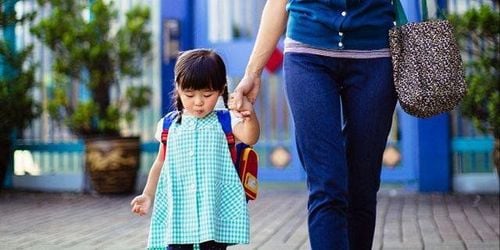3-year-olds are very active and curious, so it’s quite common for them to have a reduced appetite. Parents may gradually become accustomed to their child eating less, but did you know that this can lead to malnutrition, stunted growth, or even rickets? How many kilograms is the standard weight for a 3-year-old girl?
1. How much does a 3-year-old girl weigh?
At the age of 3, children can speak more and are observing and learning to expand their vocabulary while gradually improving their pronunciation. If you pay attention, you will notice that they start speaking longer sentences and talk more than before. They begin to describe or tell you stories about what they are doing or have experienced. At these moments, it’s important to spend time sharing and talking with your child so they can learn through imitation.
Sports activities help children develop their muscles, bones, joints, and tendons in a healthy way. Therefore, don’t worry too much about your child getting dirty or the potential dangers of playing outside. Instead, observe and encourage them to participate in outdoor physical activities. Three-year-olds are especially energetic, love to run and jump, and often enjoy playing soccer, learning to ride a bike, or joining in simple sports activities with their parents.
For this reason, children need to be provided with sufficient nutrients to support their need to explore and learn.
However, you will notice that most children at this age tend to be picky eaters. This is completely normal because when they are focused on exploring the world around them, they may lose interest in your boring meals.
You might feel worried and look for ways to solve this, but here are a few helpful tips for you: Make the meals visually appealing to attract the child’s attention, choose milk that helps children gain weight quickly to ensure they get sufficient nutrition, divide meals into smaller portions to aid digestion and make eating more enjoyable, and let your child eat meals with the family.
Following your child’s height and weight monthly is essential to help you assess their physical health and overall well-being. According to the World Health Organization (WHO) growth standards, the weight benchmarks for a 3-year-old girl are as follows:
- Malnourished: If the weight is below 11 kg.
- At risk of malnutrition: If the weight is below 12.1 kg.
- Normal: Weight is approximately 13.9 kg.
- At risk of obesity: If the weight exceeds 15.9 kg.
- Obese: If the weight exceeds 17.8 kg.
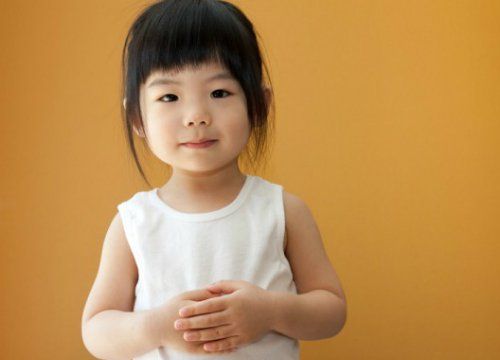
2. The development of a 3-year old child
2.1. Physical development of a 3-year-old child
- A 3-year-old child can jump, pedal a tricycle, kick a ball, and alternate their feet while climbing stairs.
- They can unbutton and take off their clothes, but may still need help putting them back on.
- Children know how to wash and dry their hands.
- They can draw a circle.
- Children can tidy up their toys with adult assistance and perform simple household tasks.
- A 3-year-old child can brush their teeth independently. However, you should still take responsibility for brushing their teeth at this age.
2.2. Emotional development of a 3-year-old child
- A 3-year-old child is often ready to cry and throw tantrums, which happens quite frequently, but their mood can change very quickly.
- At this age, children may feel afraid when meeting strangers. They want to talk about their dreams with others and are less clingy to their parents than before.
2.3. Social development of a 3-year-old child
- Three-year-olds often imitate their parents’ actions and are very interested in family activities. They constantly seek adult approval and like to test the limits set by adults.
- A 3-year-old child knows how to share toys with friends and is also learning how to ask for them back. Children at this age often prefer to play alone and may create imaginary friends that they pretend to interact with.
- Three-year-olds can understand gender differences.
- They have a greater awareness of themselves, can recognize about 1,000 words, and begin to use pronouns like “I,” "you.” and “he.” At this stage, unfamiliar people can understand about 75% of what a child says.
- Three-year-olds often enjoy listening to their favorite stories repeatedly and learning short melodies and songs.
- A 3-year-old child can recognize some colors but can only focus for a short period of time.
2.4. Toilet habits of a 3-year-old child
Most 3-year-old children are trained to go without diapers during the day. However, about half of them may still wet the bed at night. If your child happens to wet the bed while sleeping, it is not necessary to punish them.
2.5. Sleep of a 3-year-old child
A 3-year-old child may resist taking naps and can become irritable when tired. Instead of scolding them, try engaging in a calm and relaxing activity together before bedtime to help them unwind after a long day of activity. When these activities become a daily routine, most children will fall asleep easily.
Encourage your child to sleep in their own bed.
At the age of 3, children often have many fears of the dark, and you need to reassure them.

3. Nutrition for 3-year-old children
By the age of 3, children begin eating more, but this does not mean that three meals a day provide enough nutrition. Try to add 1-2 small snacks such as a cup of yogurt, a glass of milk, or some fruits, to help your child gain weight and meet their nutritional needs.
It is important to note that a meal plan for a 3-year-old child must include all 4 essential nutrient groups: carbohydrates, vegetables, proteins (meat), and fats. At this stage, children are very active, so their energy consumption is high. That’s why you need to ensure they get enough nutrition to prevent malnutrition.
The age of 3 is a critical period for both physical and cognitive development. Therefore, parents need to understand this to provide nutritious meals, valuable lessons, and appropriate care to support their child’s growth and development.
Nutritional tips for 3-year-old children:
- Reduce the fat content in your child’s milk by using milk with 2%, 1%, or no fat.
- A child should drink about 450ml to 700ml of milk per day.
- Provide a balanced diet with healthy meals and encourage your child to eat vegetables and fruits.
- Limit juice consumption to 120ml – 180ml per day. Choose fruits rich in vitamin C and encourage your child to drink plenty of water.
- Avoid giving your child nuts, hard candy, and chewing gum.
- Encourage your child to use a spoon and eat independently.
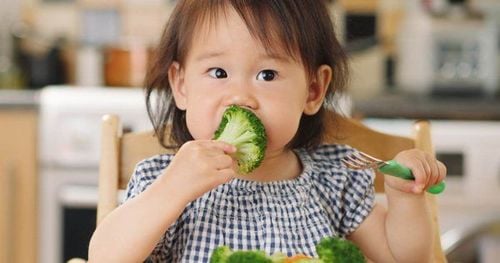
4. Some notes when caring for a 3-year-old child
Stimulating development in 3-year-old children:
- Encourage your child to read books and play simple puzzles.
- 3 year-old children enjoy playing with water and sand.
- Language development in young children is enhanced through interaction and direct conversation. Encourage them to talk about what they like, daily activities, and tell stories.
- If you have more than one child, set aside individual time for each child.
- Questions about the differences between boys and girls or where babies come from are common at this age. These questions should be answered honestly, in a way that matches your child’s understanding.
- Encourage children to participate in social activities outside the family, such as at school or during playdates.
- Allow children to make choices and avoid saying “no” to them all the time.
- Discipline should be fair and consistent. A short time-out may be effective for children at this age.
- If you are planning to have another baby, discuss it with your child and ensure they will still receive enough attention after the new baby arrives.
- Limit screen time (TV, phones, or computers) to under 1 hour per day.
- Excessive use of electronic devices reduces opportunities for conversations, social interactions, and imagination. You should supervise the programs your child watches.You need to know that children may not yet be able to distinguish between products of imagination and reality.
Ensuring safety for 3-year-old children:
- Make sure your home is always a safe place for your child. Set hot water taps at a safe temperature, with a maximum of 49°C.
- Provide a healthy living environment free from tobacco and drugs.
- Ensure your child wears a helmet when riding a bicycle or tricycle.
- Avoid buying motorized vehicles for your child.
- Use safety gates at the top and bottom of stairs to prevent falls. Install self-locking gates or barriers around swimming pools.
- Install smoke detectors in your home and check the batteries regularly.
- Keep medicine bottles and toxic substances sealed tightly and stored out of children’s reach.
- Be cautious with hot liquids, sharp objects, and heavy items in the kitchen, keeping them in safe places.
- Ensure all harmful substances and cleaning products such as soap, floor cleaner, and toilet cleaner are stored out of children’s reach.
- Carefully discuss road and water safety with your child. Always supervise closely when they play near roads or water bodies.
- Teach your child not to go with strangers and encourage them to tell you if anyone touches them inappropriately or in an uncomfortable place.
- Warn your child not to approach strange dogs, especially when they are eating.
- Make sure your child uses sunscreen with an SPF of 15 or higher when outdoors to protect their skin from UVA and UVB rays.
- Teach your child to memorize your phone number and those of other family members.
In addition, a 3-year-old child needs 5 mg of elemental zinc per day to ensure good appetite and proper height and weight development. Zinc plays a crucial role in most biological processes in the body, particularly in the synthesis and breakdown of nucleic acids and proteins. Zinc deficiency can lead to health issues such as neurological disorders, irritability, and moodiness. Therefore, parents need to learn about the role of zinc and how to properly supplement zinc for their child.
In addition to zinc, parents should also provide other important vitamins and minerals such as lysine, chromium, and B vitamins to help their child eat well, strengthen their immune system, and enhance resistance to illness.
Regularly visit Vinmec.com and update yourself with useful information to take care of your child and the whole family.
